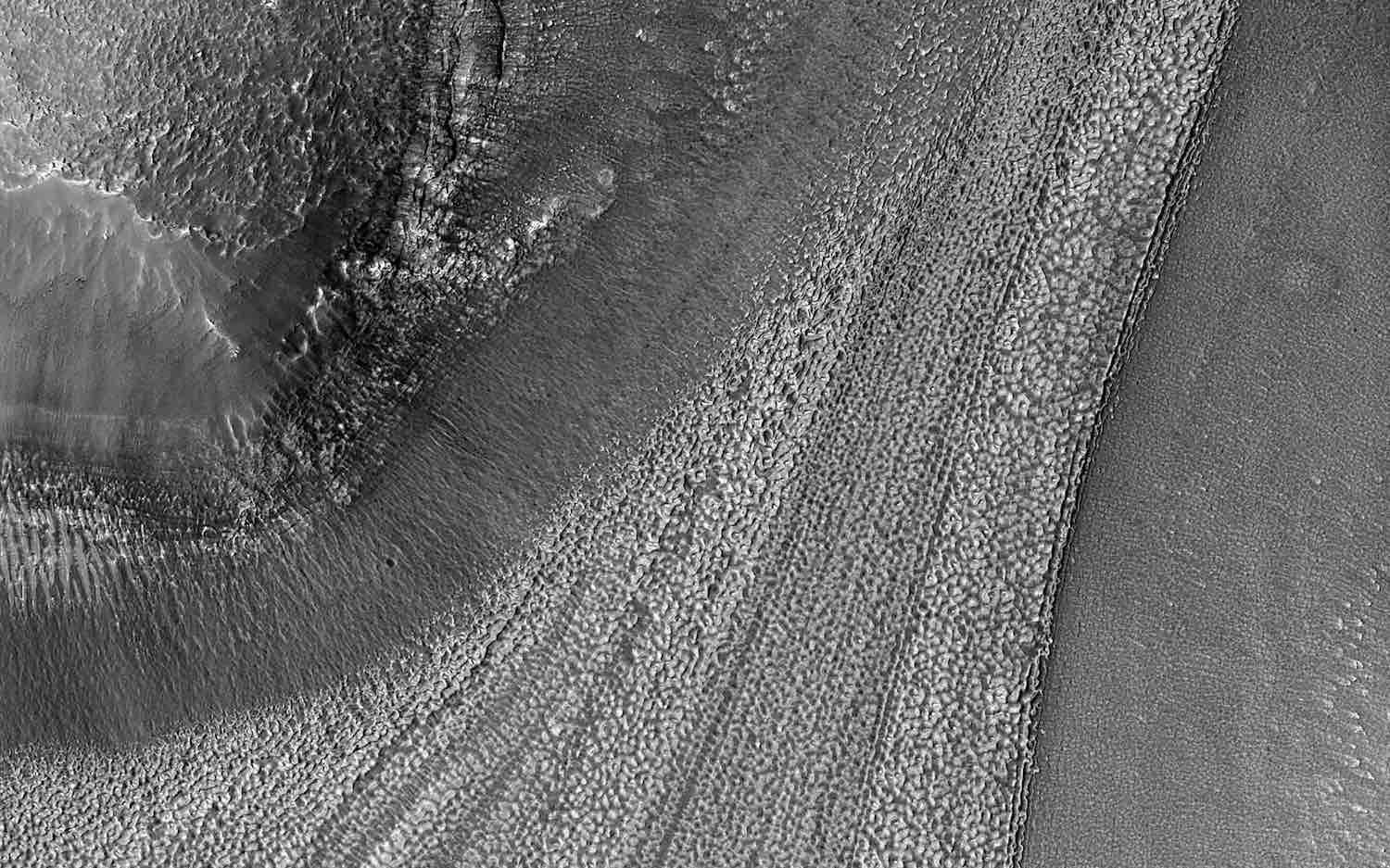NASA’s Mars Reconnaissance Orbiter recently captured images of an odd-looking series of ridged lines carved into the landscape of the Red Planet, the U.S. space agency recently announced.
Designed to aid in the search for water on Mars and assist missions to the planet with its high-quality imaging capabilities, since its launch in 2006 the Mars Reconnaissance Orbiter, or MRO, has collected information from its position in orbit above the Red Planet.
On August 18, the MRO captured a series of unusual, ridged lines that appeared to be carved into the Martian landscape, as can be seen in the image below.


However, these aren’t evidence of remnants from roadways built by ancient Martians; the curious-looking lines are a natural formation, produced by the subtle movement of ice on the planet’s surface.
Generally, ice deposits located on the surface of Mars accumulate in the greatest abundance around the planet’s polar caps. However, in the past these odd-looking ridged patterns have been found in other regions on the surface of the Red Planet as well, revealing the presence of ice on the planet’s surface in various other regions.
The ridges form as ice naturally flows downhill, moving soil and stony deposits from their positions along the Martian landscape as it goes. However, it isn’t a fast process; this gradual movement of ice that shifts the Martian soil as it flows can take several thousands of years, processes that imagery collected by the MRO can help to shed light on, as well as reveal their history.
With its ongoing studies, the MRO continues to scour the surface of Mars from its position in orbit in search of water, as well as mineral formations and evidence of water beneath the planet’s surface. The MRO also monitors daily weather patterns on the Red Planet and collects information about where minerals and water may have existed on the planet in the past.
Such information could be useful for future crewed space missions to Mars, and may also provide astrobiologists with crucial information that may help in the search for evidence of life—past or present—on the planet.
Micah Hanks is the Editor-in-Chief and Co-Founder of The Debrief. He can be reached by email at micah@thedebrief.org. Follow his work at micahhanks.com and on X: @MicahHanks.

